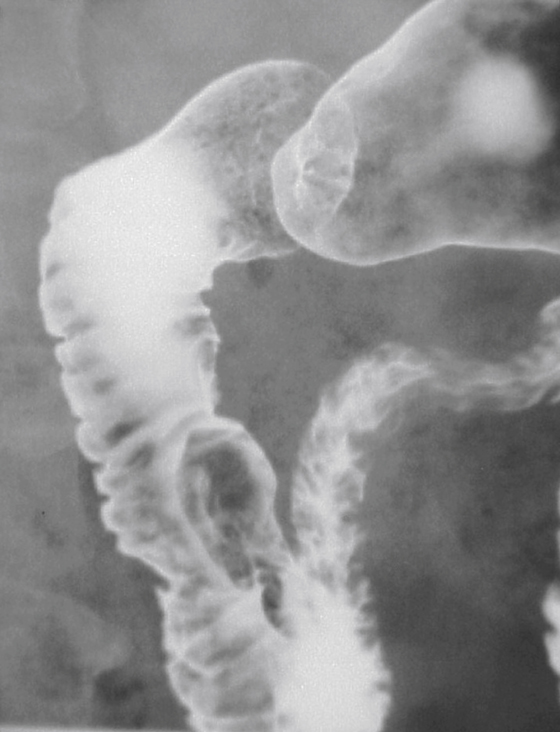CASE 76

History: A 52-year-old man presents with nausea.
1. Which of the following should be included in the differential diagnosis of the imaging finding shown in the figure? (Choose all that apply.)
2. What is the most common pathologic cause of enlargement of the papilla?
3. Pancreatitis can result in enlargement of papillae due to edema and swelling. What is the name of this sign?
4. With which polyposis syndrome are tumors of the papilla most commonly associated?
ANSWERS
CASE 76
Enlarged Papilla of the Duodenum
1. A, B, C, and D
2. D
3. C
4. B
Reference
Dahnert W. Radiology Review Manual. 6th ed. Philadelphia: Lippincott Williams & Wilkins; 2007. p 774
Cross-Reference
Gastrointestinal Imaging: THE REQUISITES, 3rd ed, p 98.
Comment
On normal upper gastrointestinal tract examinations the papilla and associated structures may be identified along the medial wall of the second portion of the duodenum (see figure). The papilla is an elevated mound of tissue that is typically smaller than 1 cm. It is considered abnormal when larger than 1.5 cm, although healthy patients have been known to have papillae enlarged up to 3 cm. Inferior to the papilla, folds may be visible, extending up to 3 cm in length.
The papilla is usually enlarged as a result of benign disease. The most common cause of edema of the papilla is the presence of stones in the distal common bile duct. Other causes include pancreatitis (either short term or long term), which can produce swelling (Poppel’s sign). Typically the enlargement of the papilla with edema produces a smooth and symmetrical enlargement. Rarely, acute duodenal ulcer disease produces papillary enlargement but is usually associated with duodenal fold thickening. A choledochocele, an abnormal enlargement of the most distal end of the common bile duct and ampullary region, also causes enlargement of the papilla.
Tumors arising in or about the papilla are called perivaterian malignancies. Carcinoma of the papilla is the most common tumor. Polyps or mesenchymal tumors, such as leiomyoma, can also arise in the region and produce enlargement. Certain polyposis syndromes—familial polyposis coli and the associated Gardner’s syndrome—predispose patients to tumor development in the perivaterian region. Such a patient can require routine screening of the upper gastrointestinal tract throughout his or her life because of this association.







